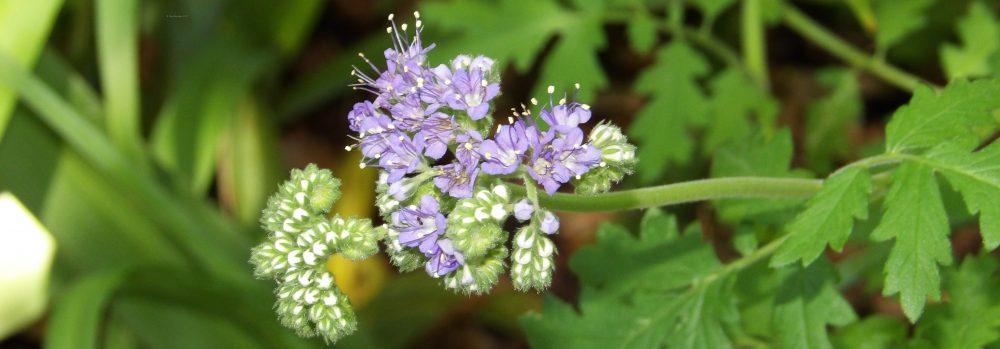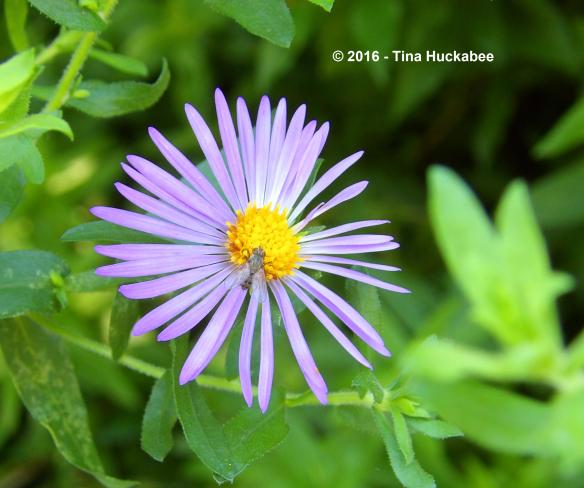June 20-26 is the week set aside this year to celebrate pollinators and the important work they do.
EVERY week should be a week to celebrate pollinators and the important work they do.
Pollinators constitute the thread that holds together the world’s food web and native plants production. Upwards to 90% of native plants are pollinated by insects, birds, and bats; 1 out of every 3 bites of food humans partake of is pollinated by (primarily) bees–honeybees, and wild, or native bees. According to Pollinator Partnership, 1,000 different plants that humans use in a variety of ways are pollinated by pollinating animals,
…and in the U.S. alone, pollinators produce products worth $40 billion annually.
The bottom line is that pollination and pollinators are principal players in the good health of all eco-systems.
What is pollination? It’s the process whereby pollen is moved, usually either by pollinating animals or the wind, to other plants thus assuring reproduction of the plants with development of seeds and fruit–and the next generation of viable plants.
Pollination produces new plant life.
What are pollinating animals? Pollinators include, but are not limited to: birds, bats, moths and butterflies, flies, mosquitoes (Boo!), native/wild bees, and honeybees. There are many, many other insects that pollinate. Additionally, in parts of China where overuse of chemicals has killed all natural pollinators, people must hand pollinate some agricultural fields.
That frightening fact should scare all of us into taking care of the Earth’s pollinators.
We know that pollinators are declining throughout the world because of habitat destruction, over and mis-use of chemicals, certain big agriculture practices, the unfettered spread of invasive plant species and the decline of native-to-region plant species, as well as other reasons, like pollinator diseases.
The outlook for the health of pollinators and therefore, the rest of us, is tricky at best.
So, what can we do? The easiest thing is to plant for pollinators in our own home gardens, or neighborhood school gardens, or local parks–or all three, plus anywhere else you can think of.
It’s so simple!
Get rid of some (or all!) of the water-wasting turf so common in home and commercial landscapes. Mono-culture turf feeds nothing, except for problematic insects, and requires more irrigation, more chemicals, and more effort than planting native or well-adapted flowering perennials and annuals.
Once your garden bed is prepared and planted, sit back and watch the show. If you plant it, they will come.
Your garden doesn’t have to be huge, but do plant a variety of blooming plants for the whole of your growing season–the more, the merrier!
It’s always best to use native plants if you have access to a local seed source or a nursery that promotes native plants. But non-native, well-adapted blooming annuals and perennials will also do the pollinator trick. Ask the nursery or plant provider if any pesticides were used when growing the plants you want to buy. If so, don’t buy them and TELL the nursery why. Pesticides and insects are not a good combination–EVER.
Contact your County Extension Agent’s office for a list of good pollinator plants for your area. As well, locally owned nurseries are usually great sources of information on pollinator plants. The Pollinator Partnership, Lady Bird Johnson Wildflower Research Center, and National Wildlife Federation are all excellent on-line sources for learning about pollinators and how you can be a part of the solution to their problems.
Pollinators are beautiful.
Pollinators are vital links in the fitness of the Earth’s eco-systems.
Pollinators deserve to live and thrive.
Plant for pollinators in your garden. Encourage neighbors and community organizations to do the same. Lobby your local, state, and national representatives to set aside land so that these essential creatures can continue their work and contributions to the well-being of our world.
Happy National Pollinator Week!






















I have managed to allow for quite the infestation of lemon basil in my yard. I don’t mind it terribly, as it blooms nearly year round (and smells nice and occasionally makes its way into the kitchen.)
I have had zero luck with Echinacea, no matter how intentionally I try to grow it. Any tips for helping it along in this neck of the woods?
LikeLike
Oooh, lemon basil–so nice! As for the coneflowers, hmm, you’re not the first to tell me that you can’t grow it and I’ve never done anything special to mine and they’re downright weedy. I threw out a packet of seeds from the WC some 20-odd years ago and the rest is history. One thing in my gardens is that I have very little full sun–everything gets shade at some, or many points during the day. I know that cones are considered “full sun” plants, but maybe a break from the blast?? My soil is rather clayey and therefore, a bit more nutritious than much of the rest of Austin. Keep trying, you might find just the right spot!!
LikeLiked by 1 person
Clay and shady. I’ll give that a go. I think I’ve done clay and sun and shady and loam and a few other combinations but not clay and shady yet. Thanks!
LikeLike
Maybe more part shade, rather than full shade. Cones do like a bit of the blast.
LikeLike
You have some great photos of pollinators. I originally planted to attract hummingbirds and butterflies, which also brings in the pollinators.
LikeLike
Thanks!! I did exactly as you–planted for the more obvious and, dare I say it, *sexy* of the pollinator crowd. But over the years, have come to appreciate the many, many pollinators out there–working hard, not getting the respect or pay, or benefits that they should. Ooops, I sound like I’m running for office.
LikeLiked by 1 person
I had no idea there was such a thing as pollinator week, though now that I know, I may join you in celebrating with a blog post, too. I love your photos, especially the one of the Pipevine Swallowtail! We’re hoping our pipevine, which is growing quite well this year, will attract this beautiful pollinator to our garden. However, I have no desire to attract the mosquito. 🙂
LikeLike
I thought about whether you’re getting any Pipevines around your vine. If you’re not yet, you probably will soon!!
LikeLike
Beautiful photos and very interesting, important post.
LikeLike
Thank you, Beauty!
LikeLiked by 1 person
All your photos are amazing, but I really enjoyed the Pipevine Swallowtail pic at the end. I’d been meaning to participate in the pollinator posts, but this has been a crazy, busy time and I’ve run out of time and energy. You have many amazing pollinator friends visiting your garden!
LikeLike
Thanks, Beth. That Pipevine was just begging to have its photo taken! I’m so happy that the garden is attracting such a variety of critters.
LikeLike
My entire garden is a pollinator garden! They form the backbone of our food supply. I sneak this info into my classes even though it isn’t in the curriculum. I refuse to omit it because some goober at the state level doesn’t think it’s important. My class, my rules. 🙂
LikeLiked by 1 person
I know you have loads of gorgeous bloomers in your gardens–I’m certain your pollinators are in pollinator heaven. Good for you in teaching about wildlife–to heck with the goobers! (We’ve got plenty of those in Texas, too. 😦
LikeLike
That shot of the Three Amigos really tickles my fancy – even more than the always lovely butterflies and metallic sweat bees for whatever reason. I’m so impressed you’ve learned to ID so many of the tiniest pollinators. A sure sign of dedication!
We recently watched the documentary “More than Honey” to observe Pollinator Week, and it was a very sobering experience, especially the portion showing Chinese human pollinators at work in their chemically decimated orchards. We humans have a lot to offer the pollination process, but preferably with our decisions to plant natives in variety!
PS – Down with the Goobers Everywhere!
LikeLike
Isn’t that shot great? I didn’t even see all three bees until I downloaded the photo. So cute.
Remember that my native bee id’s are approximate. I *think* I’m correct on some, but it’s a crap shoot. I’m on the FB “Native Bees of Texas Co-Op” and that’s been a help.
I’ve seen “More than Honey”–sobering is the right word, but a beautiful film.
Perhaps “Down with the Goobers Everywhere” should be a bumper sticker? You read it here, first, folks!
LikeLike
Hurrah for pollinators and these beautiful photos of a diverse crowd. So many of our food plants that came from the new world require the new world pollinators that they co-evolved with to set abundant fruit. We can’t just rely on a species or two to do all the work. I knew someone in California trying to grow squash. She had big lovely plants and many flowers but no fruit. She eventually realized she had a pollination problem. She had to hand pollinate each flower and it turned out to mean quite a lot of work.
LikeLike
Hurrah for pollinators, indeed!! As I’m paying more attention, I’m realizing just how many there are in the garden, quietly doing their work and not bothering anyone.
I can only imagine how much work hand pollinating would be. What a drag!
LikeLike
Tina preciosas fotos de los polinizadores. En lo que era mi jardín cuando estaba en condiciones, todo estaba plantado para los polinizadores. Acercabas una rosa a tu cara para oler su perfume y te salía un polinizador de dentro o cuando ya habías olido la rosa. Tengo una pérgola de madera con un parthenocissus tricuspidata “Veitechii” y cuando florece con sus flores muy pequeñas, puedes estar sentado bajo su sombra mientras que encima de tu cabeza hay una marabunta de polinizadores y a tí no no hacen nada. Es maravilloso oír su zumbido. Gracias Tina por sensibilizarnos en un tema tan importante como el de los polinizadores. Saludos de Margarita.
LikeLike
It’s easy to plant for pollinators, isn’t it Margarita! And you’re so right that it’s wonderful to see them and to hear their buzzing as they work!
LikeLike
Sí, es especial escuchar su zumbido y estar observando como trabajan. Se te va el tiempo admirándoles como van de flor en flor, y en cada flor se detienen a ver si hay comida y están un rato. Luego se van a otra flor de la misma planta y repiten lo mismo hasta que terminan con esa planta. Luego van a por las flores de otra planta o si están muy cargados de néctar, lo llevan a su colmena y regresan al mismo sitio. Son muy trabajadores y organizados. Saludos de Margarita.
LikeLike
Pollinators are definitely hard workers!
LikeLike
You are the best advocate for the pollinators Tina! One that leads by example 🙂
LikeLike
Awe, thanks!! I hope so–leading by example is the best way to lead!
LikeLike
This is a beautiful post highlighting pollinators and the work that they do for us. Here in Cambridgeshire there have been disappointingly small numbers of butterflies around this year, but the bees and flies are proving to be entertaining, especially now that the hoverflies are about.
LikeLike
Thanks, Allison. That’s too bad that the butterflies haven’t been as numerous. Ours are more so this year because we had virtually no winter. Usually, it’s late summer/fall that the butterflies/moths really kick into action. I love to watch the bees and flies and adore the hoverflies!
LikeLike
Pingback: A Pollinator Garden Abstract – stbarbebaker